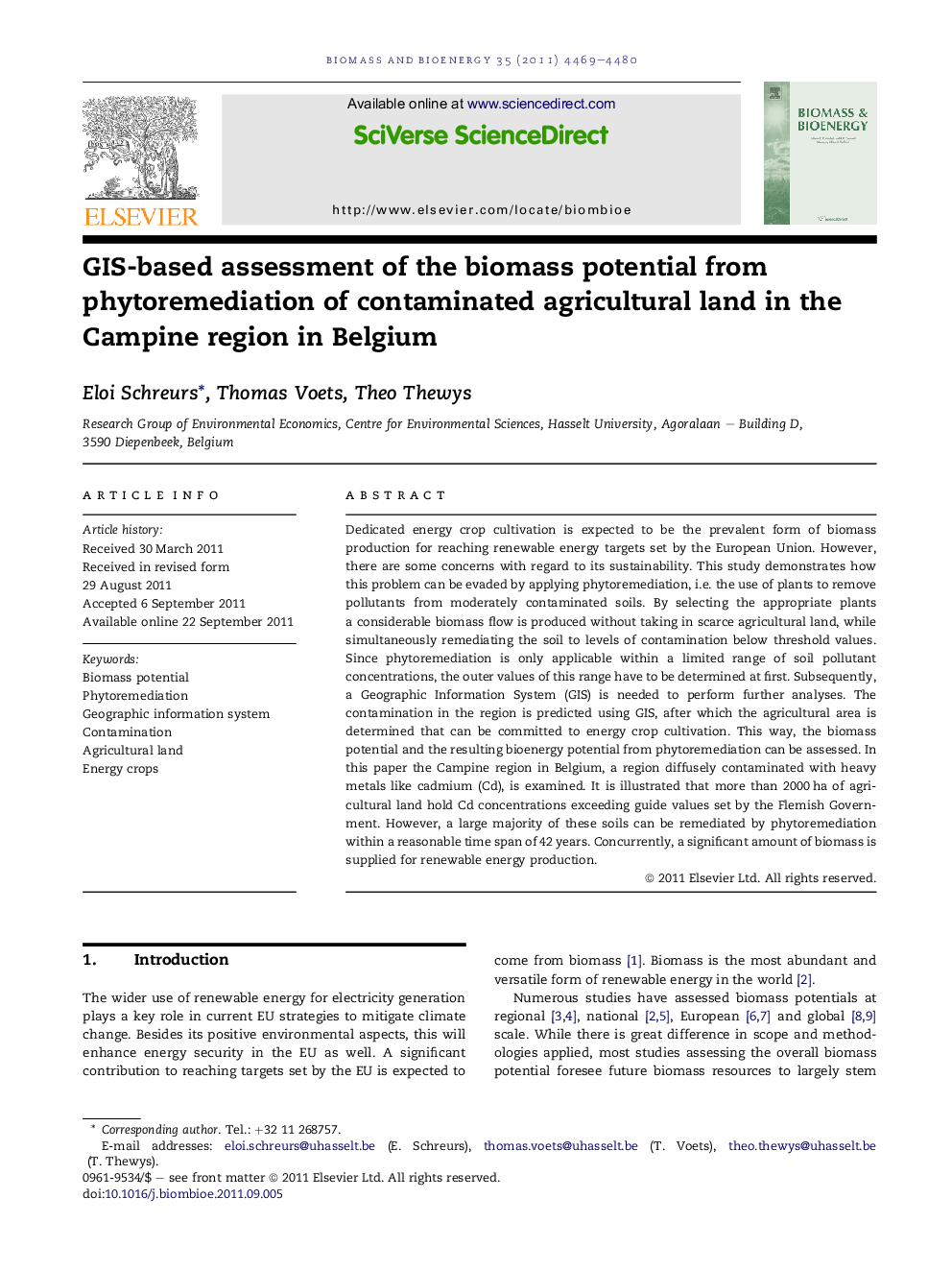| Article ID | Journal | Published Year | Pages | File Type |
|---|---|---|---|---|
| 677996 | Biomass and Bioenergy | 2011 | 12 Pages |
Dedicated energy crop cultivation is expected to be the prevalent form of biomass production for reaching renewable energy targets set by the European Union. However, there are some concerns with regard to its sustainability. This study demonstrates how this problem can be evaded by applying phytoremediation, i.e. the use of plants to remove pollutants from moderately contaminated soils. By selecting the appropriate plants a considerable biomass flow is produced without taking in scarce agricultural land, while simultaneously remediating the soil to levels of contamination below threshold values. Since phytoremediation is only applicable within a limited range of soil pollutant concentrations, the outer values of this range have to be determined at first. Subsequently, a Geographic Information System (GIS) is needed to perform further analyses. The contamination in the region is predicted using GIS, after which the agricultural area is determined that can be committed to energy crop cultivation. This way, the biomass potential and the resulting bioenergy potential from phytoremediation can be assessed. In this paper the Campine region in Belgium, a region diffusely contaminated with heavy metals like cadmium (Cd), is examined. It is illustrated that more than 2000 ha of agricultural land hold Cd concentrations exceeding guide values set by the Flemish Government. However, a large majority of these soils can be remediated by phytoremediation within a reasonable time span of 42 years. Concurrently, a significant amount of biomass is supplied for renewable energy production.
► More than 2000 ha of agricultural land have elevated Cd concentrations. ► 87% can be remediated within 42 years by phytoremediation. ► Annual biomass flow of 19 067 Mg for 21 years.
